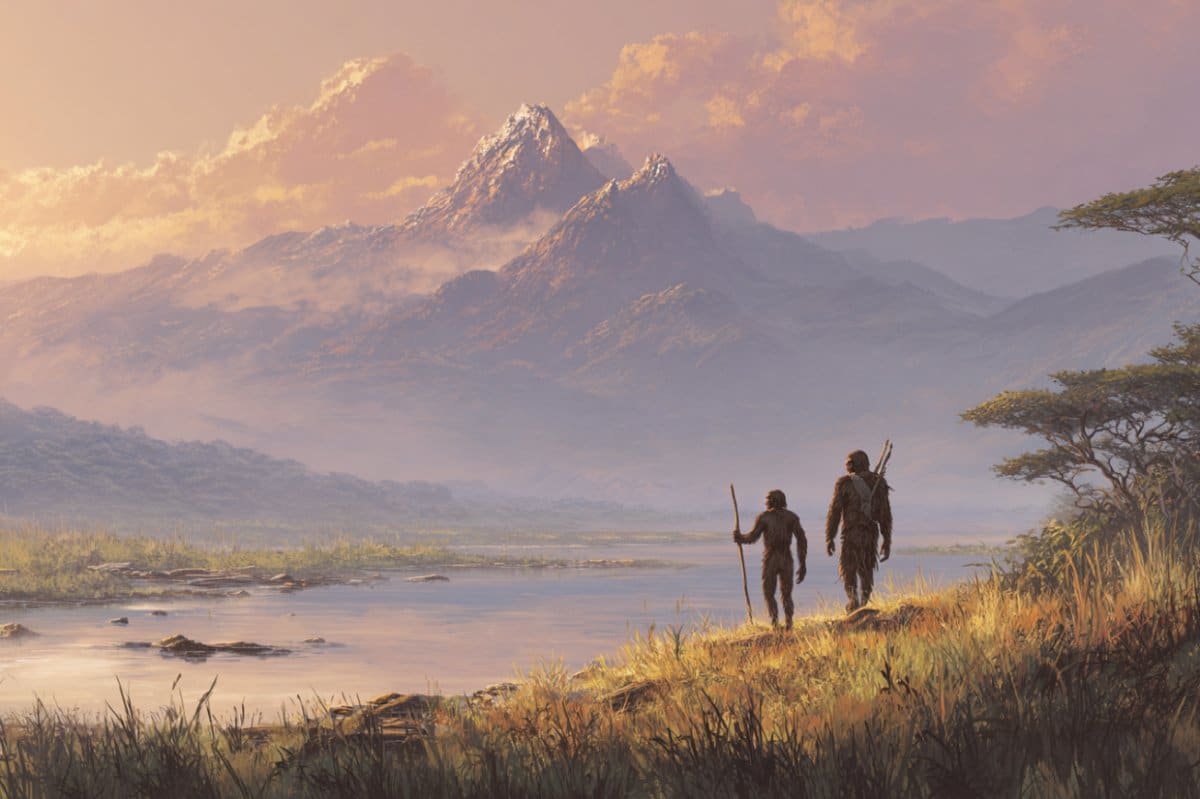Summary: An international team of researchers working at Ledi-Geraru in Ethiopia has uncovered fossils indicating that early Homo and a newly identified Australopithecus species coexisted between 2.6 and 2.8 million years ago. The discovery includes 13 Australopithecus teeth, distinct from the famous Australopithecus afarensis (“Lucy”), and confirms there is no evidence of Lucy’s kind after 2.95 million years ago.
Dating was made possible by analyzing volcanic ash layers containing feldspar crystals, bracketing the fossils in time. This finding reveals a more complex, “bushy tree” pattern of human evolution, where different hominin species overlapped in both time and place.
Key Facts
- Two Hominin Species Together: Oldest known Homo fossils and a new Australopithecus species found at the same site.
- Precise Dating from Volcanic Ash: Feldspar crystals in volcanic layers bracketed the fossils at 2.6–2.8 million years old.
- Complex Evolutionary Picture: Supports a “bushy tree” model of human evolution with overlapping species.
Source: Arizona State University
A team of international scientists has discovered new fossils at a field site in Africa that indicate Australopithecus, and the oldest specimens of Homo, coexisted at the same place in Africa at the same time — between 2.6 and 2.8 million years ago. The paleoanthropologists discovered a new species of Australopithecus that has never been found anywhere.
The Ledi-Geraru Research Project is led by scientists at Arizona State University and the site has revealed the oldest member of the genus Homo and the earliest Oldowan stone tools on the planet.

The research team concluded that the Ledi-Geraru Australopithecus teeth are a new species, rather than belonging to Australopithecus afarensis (the famous ‘Lucy’), confirming that there is still no evidence of Lucy’s kind younger than 2.95 million years ago.
“This new research shows that the image many of us have in our minds of an ape to a Neanderthal to a modern human is not correct — evolution doesn’t work like that,” said ASU paleoecologist Kaye Reed.
“Here we have two hominin species that are together. And human evolution is not linear, it’s a bushy tree, there are life forms that go extinct.”
Reed is a Research Scientist at the Institute of Human Origins and President’s Professor Emerita at the School of Human Evolution and Social Change at ASU. She has been co-director of the Ledi-Geraru Research Project since 2002.
Ledi-Geraru
What fossils did they find to help them tell this story? Teeth, 13 of them to be exact.
This field site has been famous before. In 2013 a team led by Reed discovered the jaw of the earliest Homo specimen ever found at 2.8 million years old. This new paper details new teeth found at the site that belong to both the genus Homo and a new species of the genus Australopithecus.
“The new finds of Homo teeth from 2.6 – 2.8 million year old sediments—reported in this paper—confirms the antiquity of our lineage,” said Brian Villmoare, lead author and ASU alumnus.
“We know what the teeth and mandible of the earliest Homo look like, but that’s it. This emphasizes the critical importance of finding additional fossils to understand the differences
between Australopithecus and Homo, and potentially how they were able to overlap in the fossil record at the same location.”
The team cannot name the species yet based on the teeth alone; more fossils are needed before that can happen.
How old are the fossils?
How do scientists know these fossil teeth are millions of years old?
Volcanoes.
The Afar region is still an active rifting environment. There were a lot of volcanoes and tectonic activity and when these volcanoes erupted ash, the ash contained crystals called feldspars that allow the scientists to date them, explained Christopher Campisano, a geologist at ASU.
“We can date the eruptions that were happening on the landscape when they’re deposited,” said Campisano, a Research Scientist at the Institute of Human Origins and Associate Professor at the School of Human Evolution and Social Change.
“And we know that these fossils are interbed between those eruptions, so we can date units above and below the fossils. We are dating the volcanic ash of the eruptions that were happening while they were on the landscape.”
Finding fossils and dating the landscape not only helps scientists understand the species – it helps them recreate the environment millions of years ago. The modern faulted badlands of Ledi-Geraru, where the fossils were found are a stark contrast to the landscape these hominins traversed 2.6 – 2.8 million years ago. Back then, rivers migrated across a vegetated landscape into shallow lakes that expanded and contracted over time.
Ramon Arrowsmith, a geologist at ASU, has been working with the Ledi-Geraru Research Project since 2002. He explained the area has an interpretable geologic record with good age control for the geologic time range of 2.3 to 2.95 million years ago.
“It is a critical time period for human evolution as this new paper shows,” said Arrowsmith, professor at the School of Earth and Space Exploration. “The geology gives us the age and characteristics of the sedimentary deposits containing the fossils. It is essential for age control.”
What’s next?
Reed said the team is examining tooth enamel now to find out what they can about what these species were eating. There are still remaining questions the team will continue to work on.
Were the early Homo and this unidentified species of Australopithecus eating the same things? Were they fighting for or sharing resources? Did they pass each other daily? Who were the ancestors of these species?
No one knows – yet.
“Whenever you have an exciting discovery, if you’re a paleontologist, you always know that you need more information,” said Reed. “You need more fossils. That’s why it’s an important field to train people in and for people to go out and find their own sites and find places that we haven’t found fossils yet.”
“More fossils will help us tell the story of what happened to our ancestors a long time ago — but because we’re the survivors we know that it happened to us.”
The paper “New discoveries of Australopithecus and Homo from Ledi-Geraru, Ethiopia,” was published in the journal Nature. The team of scientists and field team working on this project is widespread and many work at Arizona State University, or are alumni of ASU.
ASU alumni and current faculty authors include; Associate Professor Brian Villmoare, Associate Professor Lucas Delezene, Professor Amy Rector, Associate Research Professor Erin DiMaggio, Research Professor David Feary, PhD Candidate Daniel Chupik, Instructor Dominique Garello, Assistant Professor Ellis M. Locke, Lecturer Joshua Robinson, Assistant Professor Irene Smail and the late Professor William Kimbel.
About this evolutionary neuroscience research news
Author: Joseph Caspermeyer
Source: Arizona State University
Contact: Joseph Caspermeyer – Arizona State University
Image: The image is credited to Neuroscience News
Original Research: Open access.
“New discoveries of Australopithecus and Homo from Ledi-Geraru, Ethiopia” by Kaye Reed et al. Nature
Abstract
New discoveries of Australopithecus and Homo from Ledi-Geraru, Ethiopia
The time interval between about three and two million years ago is a critical period in human evolution—this is when the genera Homo and Paranthropus first appear in the fossil record and a possible ancestor of these genera, Australopithecus afarensis, disappears.
In eastern Africa, attempts to test hypotheses about the adaptive contexts that led to these events are limited by a paucity of fossiliferous exposures that capture this interval.
Here we describe the age, geologic context and dental morphology of new hominin fossils recovered from the Ledi-Geraru Research Project area, Ethiopia, which includes sediments from this critically underrepresented period.
We report the presence of Homo at 2.78 and 2.59 million years ago and Australopithecus at 2.63 million years ago. Although the Australopithecus specimens cannot yet be identified to species level, their morphology differs from A. afarensis and Australopithecus garhi.
These specimens suggest that Australopithecus and early Homo co-existed as two non-robust lineages in the Afar Region before 2.5 million years ago, and that the hominin fossil record is more diverse than previously known.
Accordingly, there were as many as four hominin lineages living in eastern Africa between 3.0 and 2.5 million years ago: early Homo, Paranthropus, A. garhi, and the newly discovered Ledi-Geraru Australopithecus.






